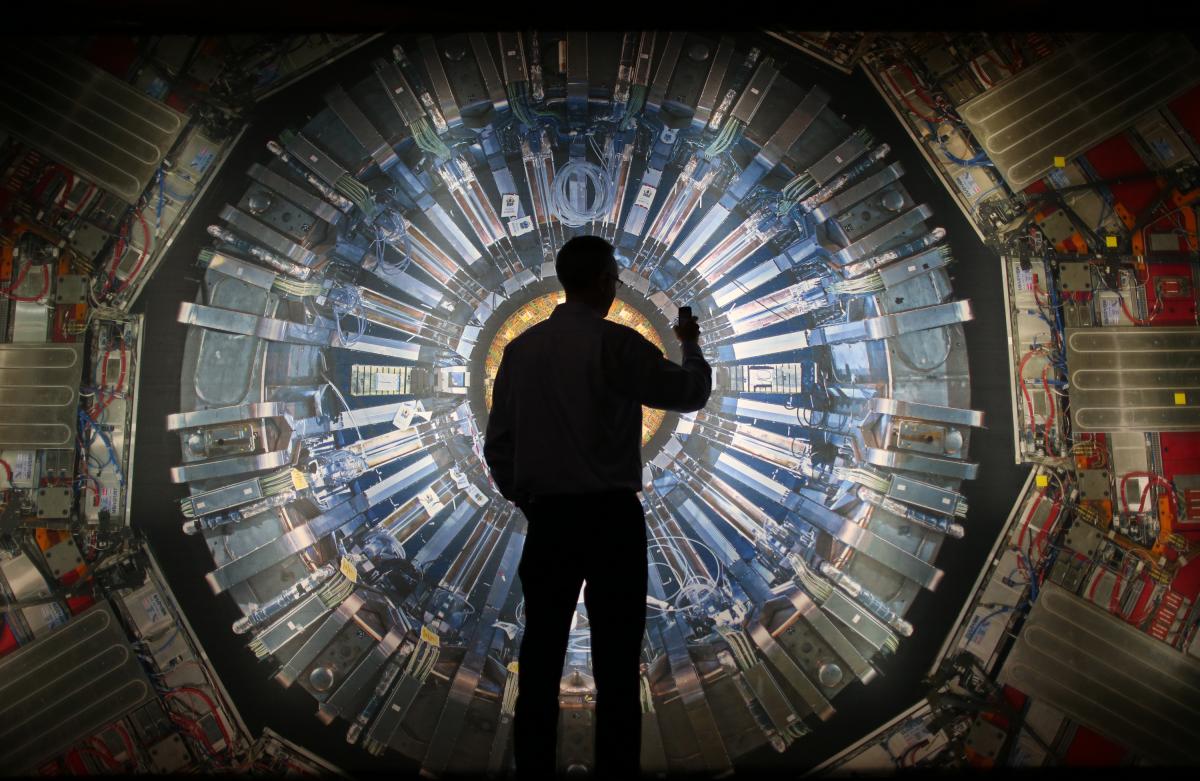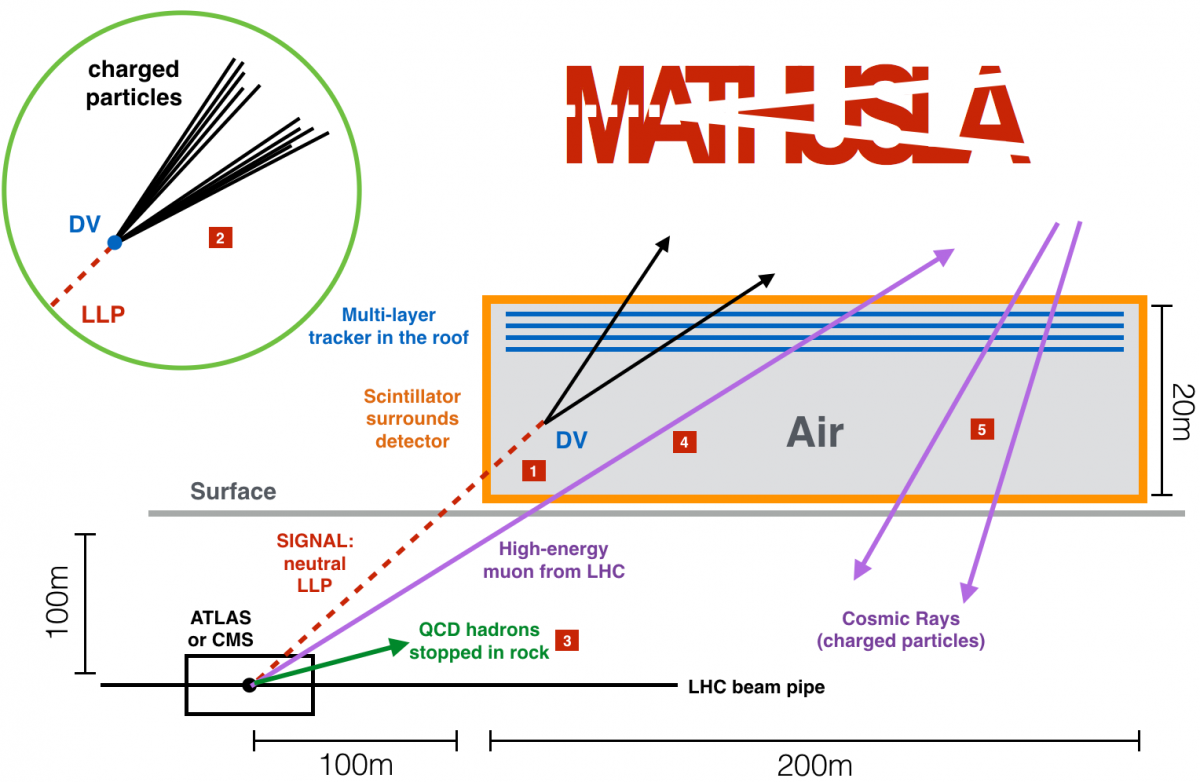The Lifetime Frontier

It bear repeating that there must be physics Beyond the Standard Model (BSM). The triumphant discovery of the 125 GeV Higgs Boson sharpens the Hierarch Problem, with naturalness suggesting new particles at the TeV scale. A multitude of interlocking astrophysical and cosmological observations give us great confidence in the existence of BSM Dark Matter (DM), while neutrino masses and the universe's matter-antimatter asymmetry are observational facts that require some kind of BSM extension.
Many theoretical explanations for these fundamental mysteries have been studied for decades. For example, Supersymmetry is perhaps the most famous solution to the Hierarchy Problem, and predicts large production cross sections for weak scale superpartners at the LHC. The freeze-out mechanism of WIMP (Weakly Interacting Massive Particle) DM establishes a relationship between the cosmological abundance and the DM-SM scattering cross section, which is the founding motivation for many DM direct detection experiments. These canonical frameworks predict new particles with sizable direct couplings to the SM, giving rise to irreducible experimental signatures. These theories may yet show up, but so far, all searches have come up empty. Where are the signals?
As we argue in a preprint submitted for publication to Physics Today [1], these null results could be hinting at something important about the nature of the universe by pointing towards the possibility of Hidden Sectors.
Hidden Sectors are simply BSM particles and forces concealed from us due to the absence of large direct couplings to the SM. They can arise robustly due to the symmetry structure of gauge theories, which naturally allow for separate sectors that do not share gauge charges. Instead, they can couple to the SM via small effective couplings called portals, allowing the production of Hidden Sector states. For example, the portal may be generated by small renormalizable couplings like mixing between our photon and a dark photon, by a heavy BSM mediator with couplings to both the Hidden Sector and the SM, or from exotic couplings of the 125 GeV Higgs Boson itself. The latter is a particularly enticing possibility, for three reasons: (a) symmetries cannot forbid the Higgs from coupling to BSM sectors, (b) even small such couplings can lead to sizable exotic branching fractions due to the tiny SM Higgs width, and (c) even tiny exotic Higgs decay branching fractions could be detected, since the HL-LHC will make of order 100 million Higgs Bosons.
Once Hidden Sector states are produced, they can only decay back to the SM via the small portals, which makes long decay lengths cτ ≳ 100 μm generic. These Long-Lived Particles (LLPs) are easily missed in standard searches but can be spectacular signatures if the right analyses or detectors are deployed at the LHC. This Lifetime Frontier represents a vast and almost completely unexplored signature space with enormous discovery potential. Furthermore, it is a unique opportunity for the LHC in particular, since the combination of high energy and high intensity is ideal for the study of rare spectacular signatures which may be produced via massive intermediate states like the Higgs.
Hidden Sectors can address any of the above fundamental mysteries without conflicting with the current set of experimental null results. For example, theories of Neutral Naturalness [2] address the Hierarchy Problem without new colored states, predicting instead a mirror QCD sector (an example of a Hidden Valley) and copious production of mirror-QCD-hadrons in exotic Higgs Decays. Dark Matter could be made up of FIMPs (Feebly Interacting Massive Particles) [3], which are produced in the early universe via the freeze-in mechanism, while WIMP-Baryogenesis [4] could proceed via the out-of-equilibrium decay of a meta-stable WIMP-like parent particle before Big-Bang Nucleosynthesis. In all of these scenarios, the tell-tale signature is production of LLPs at colliders.
So how do we look for neutral LLPs? If they decay in the tracker of one of the LHC experiments, the signature is a displaced vertex (DV). Other subsystems, especially the ATLAS Muon System, are also capable of reconstructing LLP decays. Some searches have been conducted, in particular for somewhat high-mass or high-energy LLPs, LLPs with leptonic decay modes, or pair-production of LLPs and decay in the ATLAS Muon System. Overall, however, the exploration of the Lifetime Frontier is relatively neglected compared to standard prompt searches. There is still a lot of low-hanging fruit to be picked. Most urgent are searches for neutral LLP production in exotic Higgs Decays, where the LLP itself decays hadronically and cannot be triggered on, necessitating an offline search for DVs in inclusive Higgs production events captured with lepton or VBF triggers. It is also imperative to explore DV reconstruction with decay length shorter than a few cm, where techniques derived from b-tagging may be deployed but B-hadron background has to be carefully contended with. Finally, the search for LLPs with relatively long lifetimes will require very inclusive LLP searches to maximize signal efficiency, again requiring a thorough understanding of backgrounds.
Backgrounds to LLP searches are a tough problem and can be difficult or impossible to simulate, requiring a great deal of further study. Triggering is another main challenge, since full DV reconstruction in the tracker is currently not available at the lowest trigger levels at ATLAS and CMS. Fully exploiting the LHC’s discovery potential for the Lifetime Frontier will also require a systematic search program devised in careful collaboration of experimentalists from ATLAS, CMS and LHCb as well as theorists.
These issues have motivated the formation of an LHC LLP Community Initiative, which will hold a workshop at CERN [5] on April 24-26 with the aim of publishing a community white paper later this year. The aim will be to encapsulate our current theoretical and experimental understanding of these searches to date, and provide recommendations going forward. This could set the stage for an official LHC LLP Working Group, if the need for future coordination is foreseen.

Exploration of the Lifetime Frontier does not only require new analyses at the LHC. It also requires new detectors. One example is MilliQan [6], which would be sensitive to milli-charged particles. Another is the recently proposed MATHUSLA concept (MAssive Timing Hodoscope for Ultra-Stable neutral pArticles), which allows for the detection of LLPs with decay lengths much greater than the main detector size [7]
MATHUSLA is a large surface detector dedicated to the reconstruction of displaced vertices. The LLP is invisible and decays in the air-filled decay volume, see (1) in figure above. The large size of the detector allows standard tracking components with cm/ns spatial/timing resolution to reconstruct the DV not only geometrically, but by requiring the charged particle trajectories to emerge from the same point at the same time as well. This is a very stringent signal requirement, especially for hadronic LLP decays with many charged final states (2). Backgrounds at MATHUSLA are currently being studied, but operation in the background-free regime is in principle possible. The QCD-background from the beam collision, which limits sensitivity of LLP searches in the main detector, is stopped in the rock (3). Produced high-energy muons can be vetoed and do not reconstruct a DV (4). Cosmic rays are numerous (5) but cannot pass stringent signal requirements. Neutrino scattering backgrounds can also be vetoed due to differences in geometry and timing from the LLP decay signal.
MATHUSLA can be constructed with well-understood technology, like plastic scintillators and Resistive Plate Chambers (RPCs). This makes construction in time for the HL-LHC upgrade a feasible proposition. For inclusive LLP searches, like those required for production in exotic Higgs decays, MATHUSLA is 1000x more sensitive than the LHC main detectors! For LLPs produced in exotic Higgs decays with ~10% branching fraction, this allows for the detection of lifetimes near the limit of 0.1 seconds set by Big Bang Nucleosynthesis.
The Lifetime Frontier beckons, strongly motivated both theoretically and by current LHC null results. Much work is required, but if the necessary searches and detectors are implemented, revolutionary discoveries may be our reward.
References
[1] Flashes of Hidden Worlds at Colliders, David Curtin, Raman Sundrum, arXiv:1702.02524 [hep-ph]. Submitted for publication to Physics Today.
[2] Z. Chacko, Hock-Seng Goh, and Roni Harnik. The Twin Higgs: Natural electroweak breaking from mirror symmetry. Phys. Rev. Lett., 96:231802, 2006.; Nathaniel Craig, Andrey Katz, Matt Strassler, and Raman Sun- drum. Naturalness in the Dark at the LHC. JHEP, 07:105, 2015
[3] Lawrence J. Hall, Karsten Jedamzik, John March-Russell, and Stephen M. West. Freeze-In Production of FIMP Dark Matter. JHEP, 03:080, 2010
[4] Yanou Cui and Raman Sundrum. Baryogenesis for weakly interacting massive particles. Phys. Rev., D87(11):116013, 2013
[5] https://indico.cern.ch/e/LHC_LLP_April_2017
[6] Austin Ball et al. A Letter of Intent to Install a milli-charged Particle Detector at LHC P5. 2016
[7] John Paul Chou, David Curtin, and H. J. Lubatti. New Detectors to Explore the Lifetime Frontier. Phys. Lett., B767:29–36, 2017
